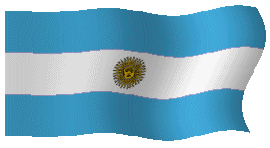
B"H
Jewish  Tours
Tours
 Buenos Aires, Argentina
Buenos Aires, Argentina

|
August 27, 2018 - 16 Elul 5778 THE SWISS DIPLOMAT WHO SAVED THOUSANDS OF JEWS By Andrew Muchin - August 27, 2018 50 0 Under Swiss Protection: Jewish Eyewitness Accounts from Wartime Budapest, edited by Agnes Hirschi and Charlotte Schallié. Foreword by Timothy Snyder. (ibidem Press) Hungary had been promulgating discriminatory laws against Jews for six years, when German forces began occupying the country in March 1944. The Germans ordered Hungary’s Jews to don yellow stars and crowd into ghettos, or join labour battalions, before beginning the deportations to Auschwitz, where 500,000 of them were murdered. Only in Budapest did substantial numbers of Hungarian Jews – an estimated 60,000-70,000 – survive. They owe their lives both to good fortune and the efforts of a heroic network comprised of the Jewish Agency for Palestine, local Zionist organizations, the International Committee of the Red Cross, diplomats from five neutral countries, including Sweden’s Raoul Wallenberg, and sympathetic Hungarians. The network’s catalyst and leader was Swiss Vice-Consul Carl Lutz (1895-1975). His little-known story of courage and ingenuity is told with fresh detail in the new book, Under Swiss Protection: Jewish Eyewitness Accounts from Wartime Budapest, which was co-edited by Agnes Hirschi, a Swiss journalist who is Lutz’s stepdaughter, and Charlotte Schallié, an associate professor of Germanic and Slavic studies at the University of Victoria. The book presents 34 testimonies and tributes gathered from Jews who were rescued by Lutz, four testimonies from members of the Hungarian resistance, as well as historical documents and photos, and background information from Swiss historian François Wisar. Lutz arrived at the Swiss Consulate in Budapest in 1942, after working as a Swiss vice-consul in British Mandate Palestine. As Wisar details, Lutz promptly negotiated with Hungary to allow 10,000 Jewish children to immigrate to Palestine. By the spring of 1944, Lutz was negotiating with occupying German officials, including SS commander Adolf Eichmann. They agreed that 7,000 Jews would receive certificates allowing them to leave for Palestine under Swiss protection. Those Jews never migrated, but Lutz – without permission from his government – extended the protection of each certificate to the holder’s entire family. That led to Lutz’s office issuing 50,000 protective letters, or schutzbriefe, to Jews in Budapest. Local Jewish organizations forged thousands more. Those schutzbriefe were largely honoured by the Germans and the Arrow Cross, the pro-Nazi party that took power in Hungary in late 1944. Lutz then gained Hungarian permission for schutzbriefe holders to move into 122 safe houses in Budapest, under the protection of Swiss and other neutral governments. The largest safe house, known as the “Glass House,” was a converted glass factory showroom that sheltered approximately 3,000 Jews, albeit in cramped, unsanitary conditions. Several survivors also describe Lutz rescuing them from imminent murder. Alexander Schlesinger tells of digging what he thought was his own grave at the order of an Arrow Cross lieutenant. Suddenly, Lutz appeared in a Swiss-marked car to claim the young Jew and his companion. “I had the impression that (Lutz) was confronting the same situations every day,” Schlesinger writes. Lutz succeeded in protecting thousands of Jews in Budapest because “he thought extraordinarily creatively how to use the system,” Schallié explained. “The Swiss government didn’t know about it – at the time. He went on a rogue mission, really.” She also credits Lutz’s skill at “building networks. He understood that no rescue mission of this scale could be done without a network.” What motivated Lutz to endure wartime danger and privations in order to rescue Jews? “We don’t really have published interviews with Lutz or a memoir,” Schallié said. “Agnes Hirschi thinks it’s largely because of his Methodist religious upbringing. “We know from one unpublished conversation with filmmaker Theo Rais that Lutz felt greatly compelled to provide humanitarian aid to persecuted Jews. “He also understood that he needed to disobey the Swiss law of neutrality in order to organize and execute his rescue mission. When Lutz was criticized for his humanitarian actions after the war by a member of the Swiss Federal Council, he responded, ‘Dear Mr. Federal Councillor, if a person drowning is stretching out his hands toward me, do I need to seek your permission first to save his life?’ ” Schallié sees “a deep humanitarian soul in Lutz, a decency as a human being. His role in Palestine added to it. He was also in the United States, where he had his education. Maybe the experience of witnessing segregation played a role.” Though Israel’s Yad Vashem Holocaust memorial named Lutz a Righteous Among the Nations in 1964, he’s less well known than fellow designees Wallenberg and Oskar Schindler. “Wallenberg was on the street distributing letters of protection,” Schallié explained. “Survivors had seen him. Lutz was always in the background. He would have endangered the whole mission if it had been known that he was involved. “Schindler’s very well known because of the film Schindler’s List. Lutz is often mentioned as the ‘Swiss Schindler.’ It should be the other way around.” Even Schallié, who develops Holocaust education programs, was unaware of Lutz until she visited Budapest in 2014 and saw a statue dedicated to him. That prompted her to research Lutz, which led her to Hirschi. READ: THE GHOST IN THE NAZIS’ WELL-OILED MACHINE Under Swiss Protection is being translated into Hungarian. Schallié said she’s seeking funding for translations into Hebrew and German, as well. She hopes the German translation will spread Lutz’s story in his native land, which didn’t officially acknowledge the hero until 1995. “He needs to be in the textbooks,” Schallié said. “Most Swiss teens don’t know his name.” |
|
Visite nuestro sitio/Visit our home page: |